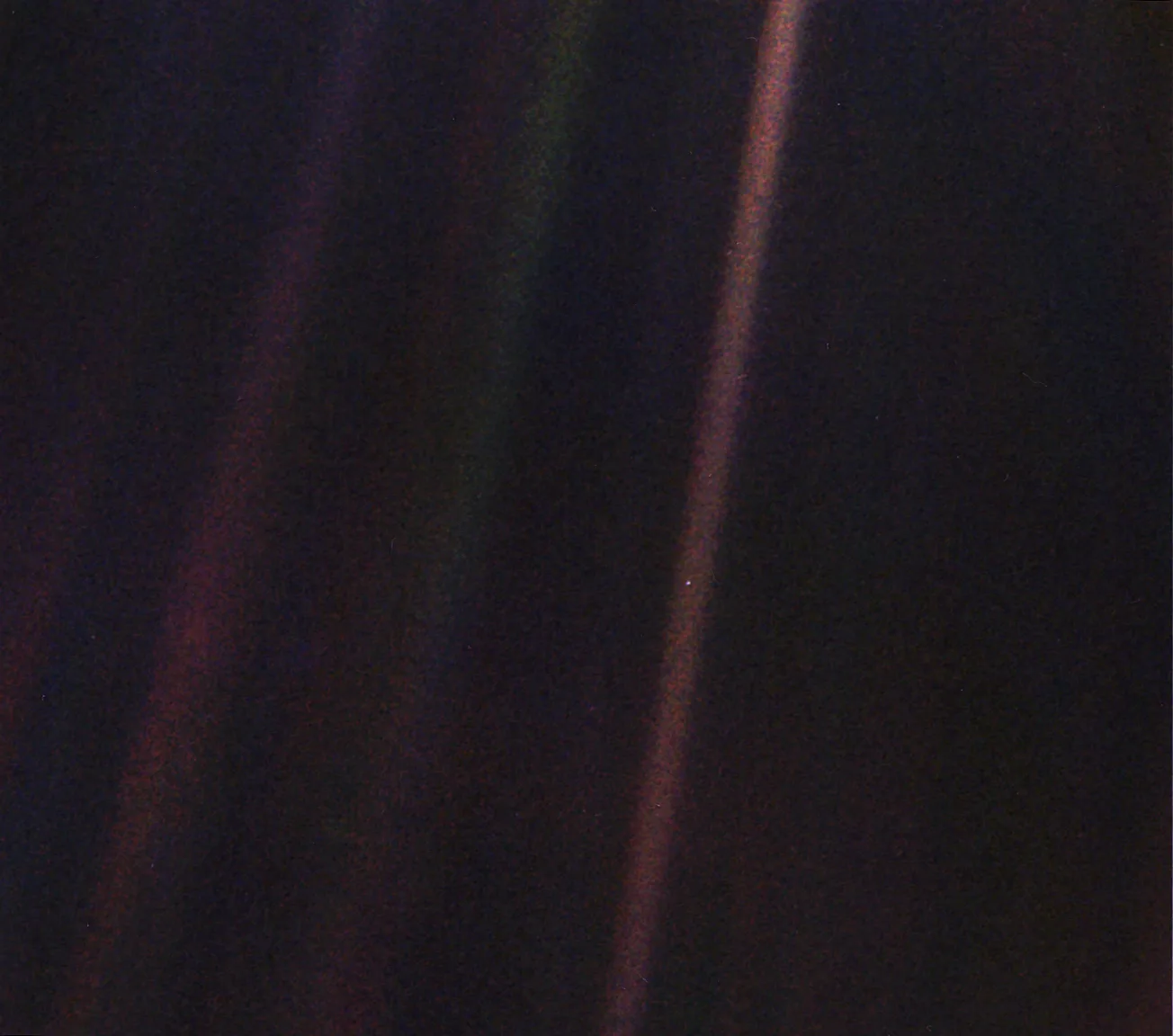Carl Sagan, an iconic astrophysicist, astronomer, and cosmologist, was also a pioneering voice in many ways, not the least of which was his concern about climate change. Known for his distinctive ability to communicate complex scientific concepts to the general public, Sagan’s outreach is best remembered for the “Cosmos” TV series, his numerous books, and the way he melded the poetic with the scientific. Two of his most profound contributions include his testimony before Congress in 1985 concerning climate change and his conceptualization of the “Pale Blue Dot” image of Earth from deep space.
A Voice for the Earth: Sagan’s Congressional Testimony on Climate Change
It’s not often that scientists capture the attention of Congress, but in 1985, Carl Sagan managed to do just that. At a time when climate change was beginning to emerge as a grave concern but was still surrounded by political hesitation and public uncertainty, Sagan became a significant warning voice.
The 1980s were formative years for climate change awareness. The scientific community was growing more alarmed about the effects of greenhouse gases, but there was still a widespread lack of public understanding and acknowledgement of the problem. In this backdrop, Sagan’s testimony was a clarion call.
Addressing Congress, Sagan presented scientific evidence illustrating how the burning of fossil fuels was releasing vast amounts of carbon dioxide into the atmosphere, leading to the greenhouse effect and the consequent warming of the planet. He drew parallels between the environment on Earth and that of our planetary neighbor, Venus, a world with a runaway greenhouse effect, where surface temperatures are hot enough to melt lead.
Sagan’s message was not just about facts and figures. He emphasized the moral and ethical implications of our actions, or lack thereof. He suggested that the potential consequences of climate change—rising sea levels, extreme weather events, and ecological disruptions—were not just scientific problems but humanitarian ones. Through his testimony, Sagan challenged both policymakers and the public to consider the kind of world we wanted to leave for future generations.
While we can’t attribute the current climate activism solely to Sagan’s efforts, his early and public advocacy undoubtedly played a significant role in increasing awareness and pushing the envelope on the issue.
https://www.c-span.org/video/?125856-1/greenhouse-effect
The “Pale Blue Dot”: A Perspective of Earth from the Depths of Space
While Sagan was concerned with the immediate challenges facing Earth, he also had an extraordinary capacity to offer perspective on our place in the vast cosmos. One of his most enduring legacies is the concept and ensuing image of the “Pale Blue Dot.”
In 1990, at Sagan’s suggestion, the Voyager 1 spacecraft, which was on its way out of our solar system, turned its camera back towards Earth. From a staggering distance of about 3.7 billion miles away, it took a photograph. The result was an image where Earth appeared as nothing more than a tiny, almost indistinct dot, suspended in a sunbeam.
The essence of his message was deeply profound. This small dot, this seemingly insignificant speck, was everything to us. Every human who has ever lived, every triumph, every tragedy, every piece of history, art, and culture, all existed on this pale blue dot. It highlighted the fragility of our world and the shared responsibility we have towards it. For Sagan, it was a stark reminder of the need for humility, unity, and the preservation of our planet.
»Look again at that dot. That’s here. That’s home. That’s us. On it everyone you love, everyone you know, everyone you ever heard of, every human being who ever was, lived out their lives. The aggregate of our joy and suffering, thousands of confident religions, ideologies, and economic doctrines, every hunter and forager, every hero and coward, every creator and destroyer of civilization, every king and peasant, every young couple in love, every mother and father, hopeful child, inventor and explorer, every teacher of morals, every corrupt politician, every “superstar,” every “supreme leader,” every saint and sinner in the history of our species lived there-on a mote of dust suspended in a sunbeam.
The Earth is a very small stage in a vast cosmic arena. Think of the endless cruelties visited by the inhabitants of one corner of this pixel on the scarcely distinguishable inhabitants of some other corner, how frequent their misunderstandings, how eager they are to kill one another, how fervent their hatreds. Think of the rivers of blood spilled by all those generals and emperors so that, in glory and triumph, they could become the momentary masters of a fraction of a dot.«
Carl Sagan: Pale Blue Dot: A Vision of the Human Future in Space, 1994
The “Pale Blue Dot” serves as a meditation on the vastness of the universe and our minuscule place within it. Yet, instead of making us feel insignificant, Sagan’s reflection made many feel more connected, both to the planet and to each other. It’s a viewpoint that shifts priorities and underscores the absurdity of our many divisions and conflicts in the face of a cosmos so vast.
https://www.youtube.com/watch?v=GO5FwsblpT8
Legacy
Carl Sagan’s unique combination of scientific brilliance, poetic eloquence, and social responsibility has left a lasting legacy. Through his efforts on climate change awareness and his contributions like the “Pale Blue Dot”, Sagan not only educated us about the universe but also about ourselves.
His voice of warning about climate change in the 1980s laid the groundwork for future scientists, activists, and policymakers. He moved beyond data and tapped into the emotional and moral dimensions of the issue. In a similar vein, the “Pale Blue Dot” transcended the boundaries of science, delving into philosophy and human introspection.
Today, as we grapple with the ongoing challenges of climate change and the broader questions of our existence and purpose, the insights of Carl Sagan remain as relevant as ever. He provided not only knowledge but a perspective—a way of looking at our world, and ourselves, with both wonder and responsibility.

